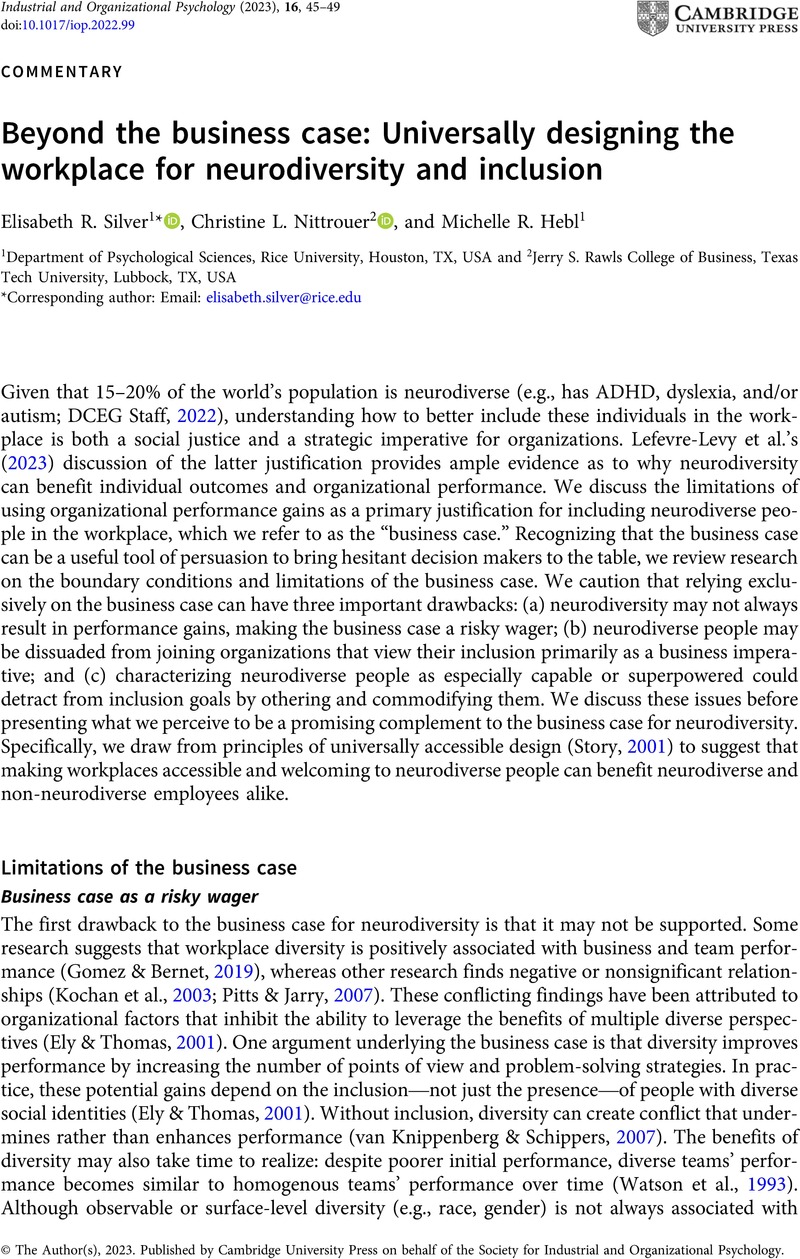Crossref Citations
This article has been cited by the following publications. This list is generated based on data provided by Crossref.
Sanders, Karin
Fisher, Sandra L.
and
Dickmann, Michael
2023.
Understanding HRM financial value from obtaining more star performers: introduction on a paper and commentary collection.
The International Journal of Human Resource Management,
Vol. 34,
Issue. 13,
p.
2571.
Samosh, Daniel
Lilius, Jacoba
and
Atwood, Kimberley
2024.
Neurodiversity and Work.
p.
257.
Doyle, Nancy
2024.
Neurodiversity and Work.
p.
13.
Tariq, Muhammad Usman
2024.
Resilience of Multicultural and Multigenerational Leadership and Workplace Experience.
p.
182.
Dahunsi, Oluwadara
Robinson, Nicaise
Parks, Cami
and
Nittrouer, Christine
2024.
Neurodiversity and Work.
p.
207.





